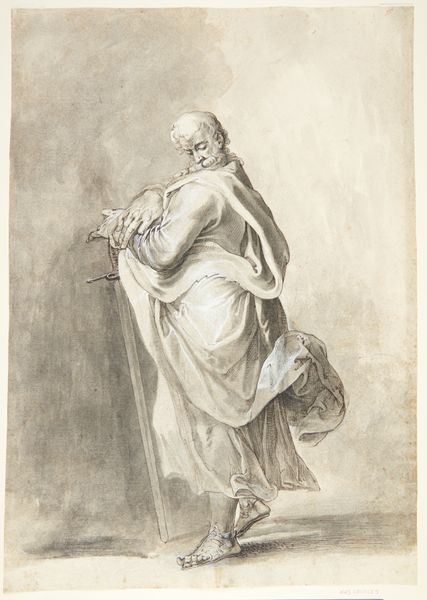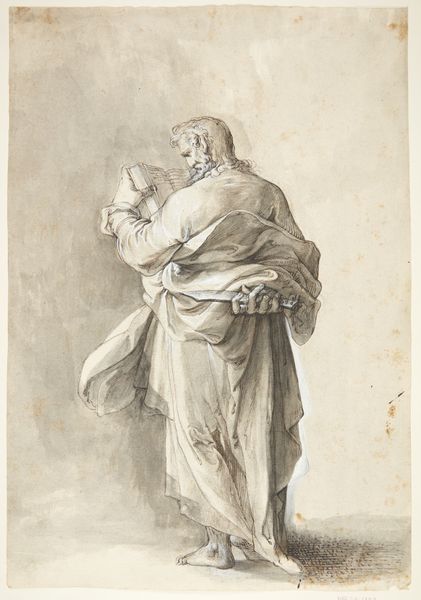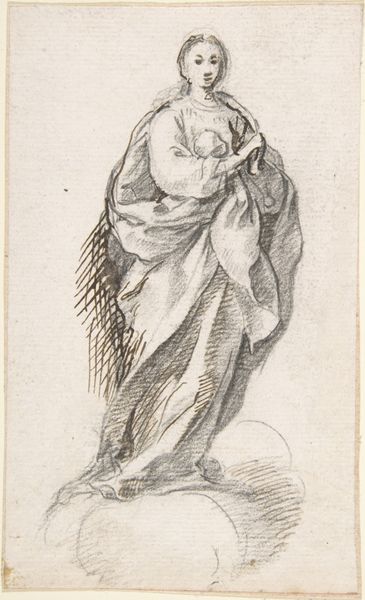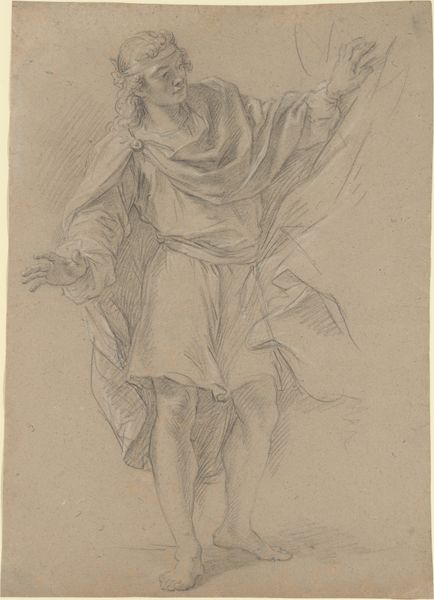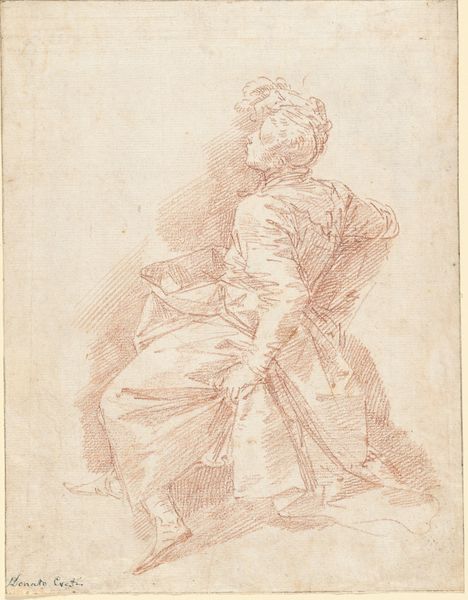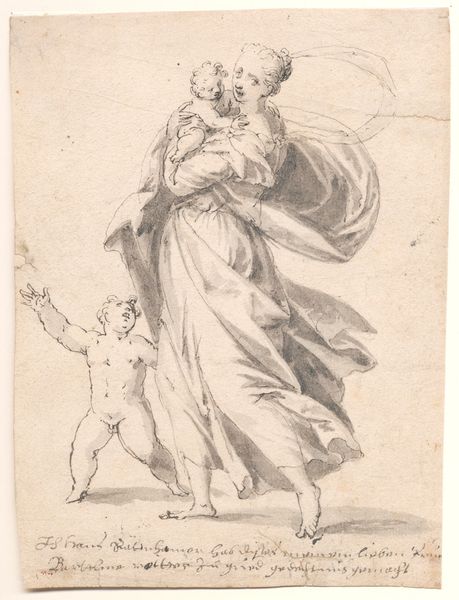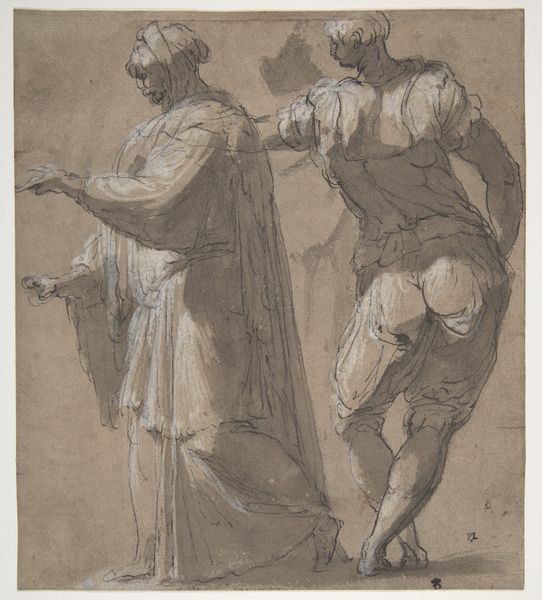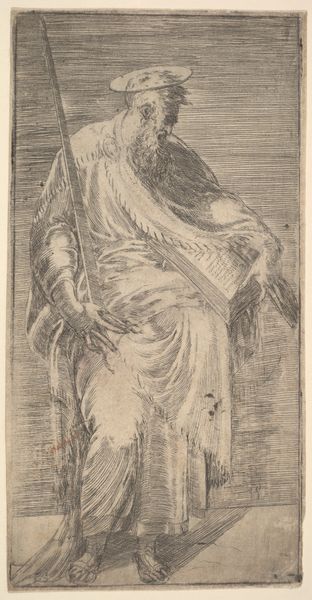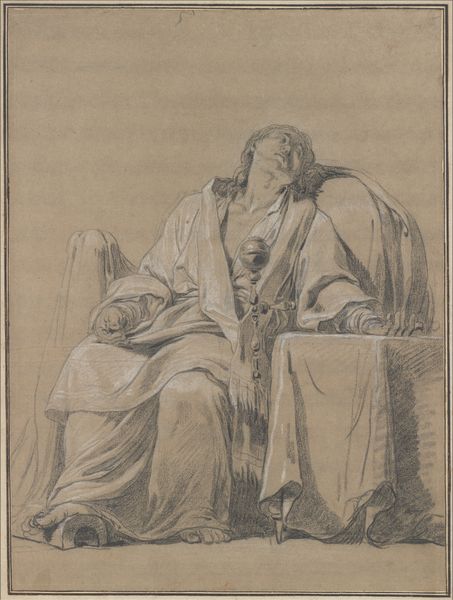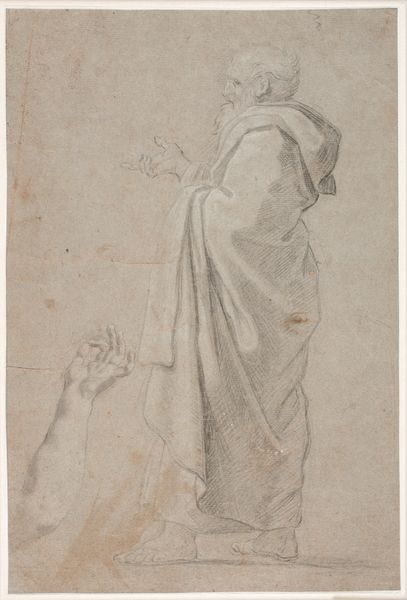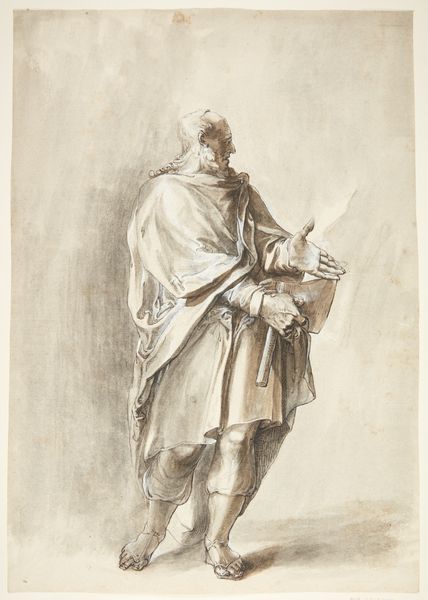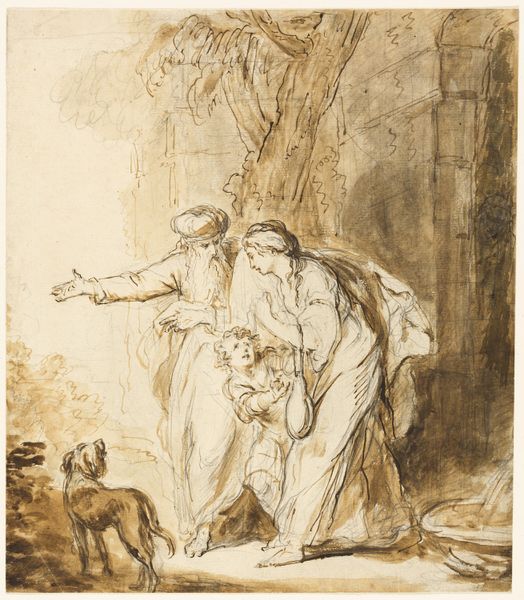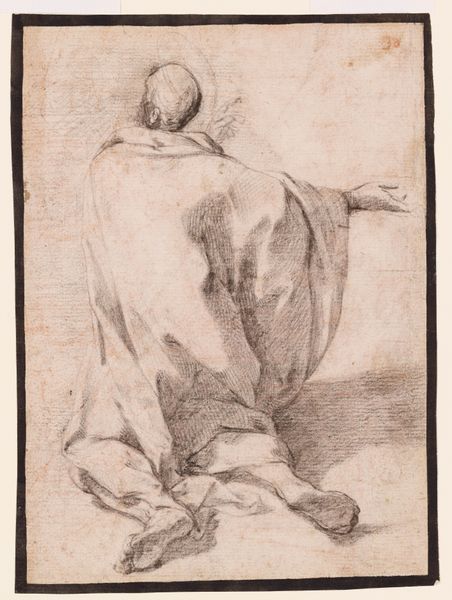
drawing, ink, pen
#
portrait
#
drawing
#
baroque
#
ink
#
pen
#
portrait drawing
#
academic-art
#
italian-renaissance
Dimensions: 428 mm (height) x 296 mm (width) (bladmaal)
Curator: Here we have "Jesus og de 12 apostle: Judas Thadæus," attributed to Matthäus Gundelach, created sometime between 1566 and 1654. It's currently held here at the SMK, Statens Museum for Kunst. Editor: What strikes me immediately is the intense rendering of cloth in pen and ink – it feels so tangible. There is almost a contrast between the raw execution of the bare foot and the deliberate texture of the draped robes. Curator: Yes, Gundelach employs pen and ink in a way that really emphasizes the material qualities. The ink, layered carefully, almost becomes sculptural, and it allows us to see how drawings can emulate painted works. His access to those materials influenced his entire aesthetic, I think. Editor: And I find that choice quite telling. Look at the dramatic pose – almost theatrical. It places this drawing firmly within the artistic and religious narratives being disseminated in the era. Curator: Precisely. The Council of Trent significantly influenced artists and their production during this period. A drawing such as this was intended to present and reinforce a visual theology in line with prescribed devotional practices of that time. This work becomes a piece of the visual puzzle in shaping faith, influencing religious sentiments, and asserting orthodox doctrine, perhaps disseminated as widely as possible through print form. Editor: That connection to mass consumption makes sense. Given his dynamic positioning and implied action, I wonder about the accessibility and influence the art holds over society. Are there other works within the Museum collection that relate and enhance what this piece may lack alone? Curator: It highlights the labor invested in art creation, too, challenging assumptions about drawings as mere preparatory sketches. Each line contributes to a refined study, transforming common materials into a representation of complex themes. This method reflects societal expectations of high craftsmanship and intellectual ability that a craftsman like Gundelach had to satisfy in order to maintain production within societal consumption, for instance. Editor: So in essence, this work is a microcosm of social, religious, and even economic interactions? A singular yet very powerful tool in shaping perceptions, both for the artist himself and the public audience viewing. Curator: I agree wholeheartedly. A close examination through the lens of process, material culture, and historical narratives gives depth of how art functions as an exchange within a period.
Comments
No comments
Be the first to comment and join the conversation on the ultimate creative platform.
